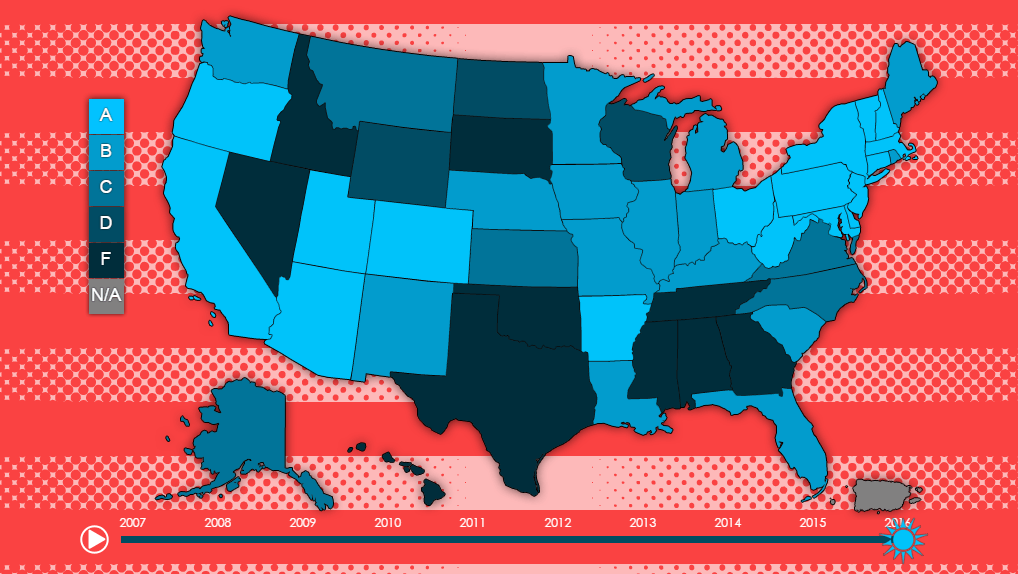States without standardized interconnection and net metering take a beating in the media. Is it justified?

Recently, the Interstate Renewable Energy Council (IREC) released its latest “Freeing the Grid” report. This scorecard assigns a grade to each state, based on their net metering and interconnection policies. Unsurprisingly, some of the worst ranked states are those where fossil fuels play a large role in the economy. States like Alaska, Alabama,Louisiana,Texas and Wyoming all fare poorly in both categories, while others Nevada, Arizona and Georgia flunk one test but do relatively well in the other. With the fossil fuel lobby working in nearly every state to roll back net metering rules, what can we learn from looking at these grades? How much do these policies hinder solar development?
Nevada, the state that produces the most solar power per capita in the United States (according to a recent Solar Energy Industry of America (SEIA) report), receives an F for net metering rules, and a C for interconnection policies. Texas makes SEIA’s top ten solar states, and yet according to IREC, Texas receives an F for net metering and a D for interconnection policies. Arizona, ranked number two by SEIA gets an F from IREC for interconnection, but receives an A for net metering.

What we see here is that solar production can, in fact, flourish in states with a mixed bag of interconnection and net metering policies. In the Southern tier of states, great solar resources, coupled with low panel prices make large-scale solar projects cash flow regardless of these two key policies. Net metering, in particular is of little or no concern to large solar developers. Where the difference lies is with indie solar, like rooftop and small solar garden projects. SEIA’s numbers do not reflect the number of individuals who are able to own their own solar, just sheer volume, and that volume comes from large, utility scale installations.
More and more solar installation companies are feeling the push to “go big or go home.” This is especially apparent in those states given poor grades by the IREC report. With the renewal of the federal investment tax credit (ITC), we will continue to see a greater move to large scale projects, regardless of the interconnection policies in any particular state.
If we are getting more solar installed and employing more people in states with less “desireable” interconnection policies, what’s the problem, right? The problem is this… not every state has the same requirements, the same transmission and distribution resources, or the same amount of sun. IREC may be barking up the wrong tree when it gives failing grades to strong solar producing states, but so is the American Legislative Exchange Council (ALEC) when they try to do away with net metering policies in states where indie solar makes more sense. Until such a time when the nation has a uniform, deregulated marketplace for electricity, free from both government incentives and rate-regulated monopolies, it is up to solar advocates in their individual states to fight to keep the marketplace open for indie producers.





